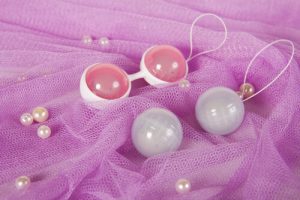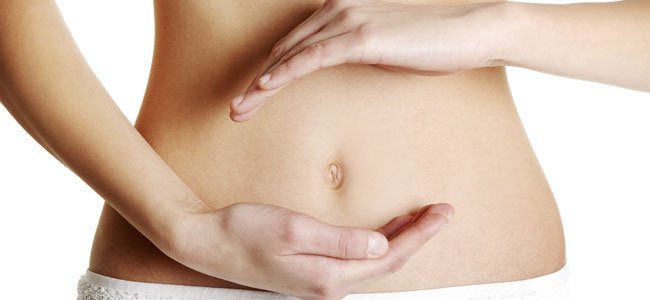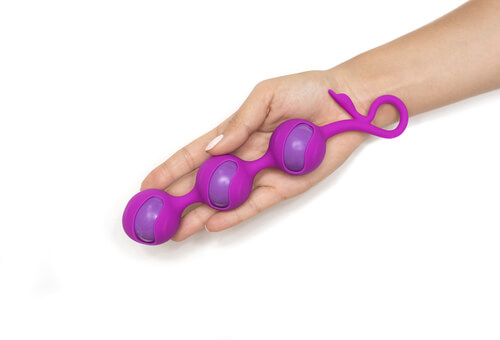Why and How to Use Chinese Ben Wa balls after Childbirth

In order to achieve successful recovery, we recommend using Chinese Ben Wa balls after your pregnancy. Keep reading to find out how.
After childbirth, a woman’s body undergoes numerous changes. On many occasions, the muscles in the pelvic region weaken during pregnancy.
It’s important to rehabilitate these muscles to avoid other sorts of complications.
There are solutions to the consequences of childbirth on your body
Nine months of pregnancy and vaginal birth are two situations that place considerable pressure on your pelvic muscles.
Vaginal birth causes contraction and stretching of the muscles of your pelvic floor, weakening and damaging them. Your pelvic floor is made up of the muscles that sustain your bladder, uterus and rectum.
The most common consequences that come with the weakening of the pelvic floor are:
- Urinary incontinence.
- Discomfort during sexual relations.
- Uterine prolapse: Sagging of organs such as the bladder, the uterus or the rectum.

One way to strengthen the pelvic zone is through the use of Ben Wa balls after giving birth.
They’re a useful resource for regaining muscle control and managing or avoiding the above mentioned consequences.
The rehabilitative function of Ben Wa balls after birth
These Chinese balls consist of two lightweight balls that are introduced into the vagina behind the levator ani muscle. In other words, you insert them in the same place as you would a tampon.
These are an excellent option. By inserting them in your vagina, you force your pelvic muscles to contract passively.
If you use them continuously, this area of your body will become stronger.
When should they be used?
It’s always best to check with your gynecologist or midwife regarding the best moment to use Ben Wa balls.
Remember that every delivery is unique, and it’s important to adapt to your circumstances. As a general rule, you should wait for at least 40 days after giving birth.
How are Chinese Ben Wa balls used
Before using your Ben Wa balls for the first time, be sure to read the instructions carefully.
The procedure is very simple and consists of three steps:
- Before insertion, be sure to wash the balls with neutral soap. Then apply lubricant to the first ball to facilitate its insertion.
- Insert the balls into your vagina – when doing so, choose a position that is comfortable for you. The balls should be inserted just as you would a tampon, leaving the string out for later removal.
- Now, stand up and walk with the balls inserted. This movement will cause the balls to tend to drop. This in turn will create a muscle contraction as your body tries to hold them in.
- At first, you can try with just one ball for a few minutes. Then you gradually increase the time until the process becomes a habit.
- If you’re unable to carry out the exercise this way, you can simply stay lying down. This position will still cause your pelvic muscles to contract.

If you’re unable to keep the balls inside, then be sure to see your gynecologist for an examination. A health professional should recommend a course of treatment.
How to choose and where to buy
There is a wide variety of Ben Wa balls available, so you can choose different sizes and materials. Ideally, they should be made of hypoallergenic silicone to avoid any risk of an allergic reaction.
The best place to buy them is at the pharmacy. This will guarantee that they’ve passed the necessary sanitary controls.
Advantages to using Ben Wa balls
The regular use of these pelvic spheres provides several benefits:
- Strengthens the pelvic floor after childbirth. The strengthening of this area helps to avoid and control urinary incontinence and the associated consequences.
- Stimulates lubrication, which is beneficial for improved sexual relations.
- They’re a simple solution, easy to use, and easy to find. They’re relatively inexpensive and last a long time.
Conclusion
The weakening of the muscles that support the pelvic organs is a common consequence of childbirth that affects many women. The sagging of these organs is a common consequence of this muscle weakening, as is urinary incontinence.
It’s always smart to check with your gynecologist before beginning any sort of treatment.
All cited sources were thoroughly reviewed by our team to ensure their quality, reliability, currency, and validity. The bibliography of this article was considered reliable and of academic or scientific accuracy.
- Aukee P, Immonen P, The effect of home biofeedback training on stress incontinence.
- Kegel, A.H. Progressive resistance exercise in the functional restoration of the perineal muscles. Am. J. Obstet.Gynaecol. (1948) 527-535
- Pardo E; Rotem R; Glinter H; Erenberg M; Yahav L; Yohay Z; Yohay D; Weintraub AY. Recovery from pelvic floor dysfunction symptoms in the postpartum is associated with the duration of the second stage of labor. Arch Gynecol Obstet. doi: 10.1007/s00404-019-05173-1.
This text is provided for informational purposes only and does not replace consultation with a professional. If in doubt, consult your specialist.








